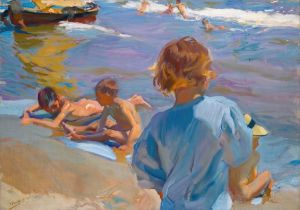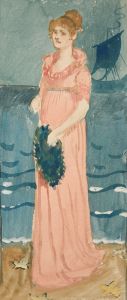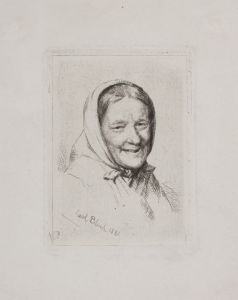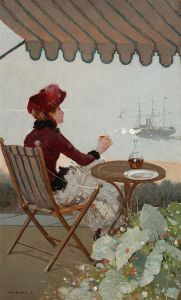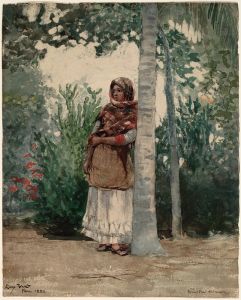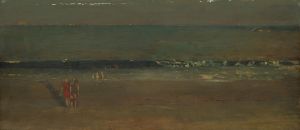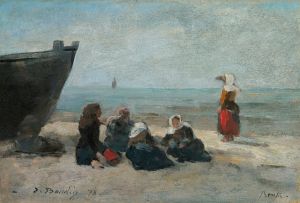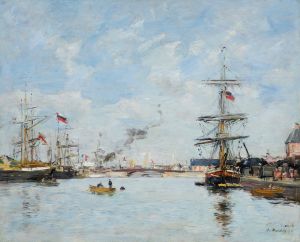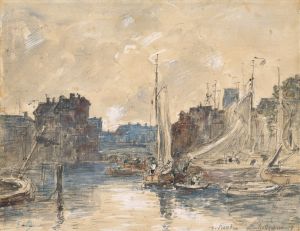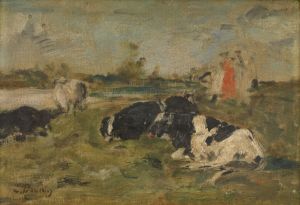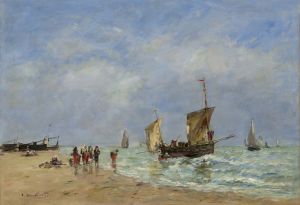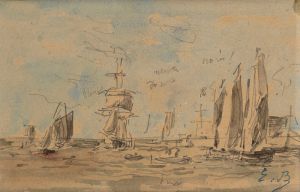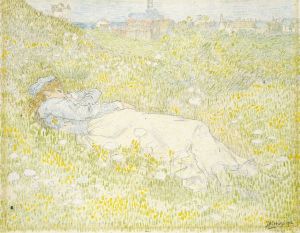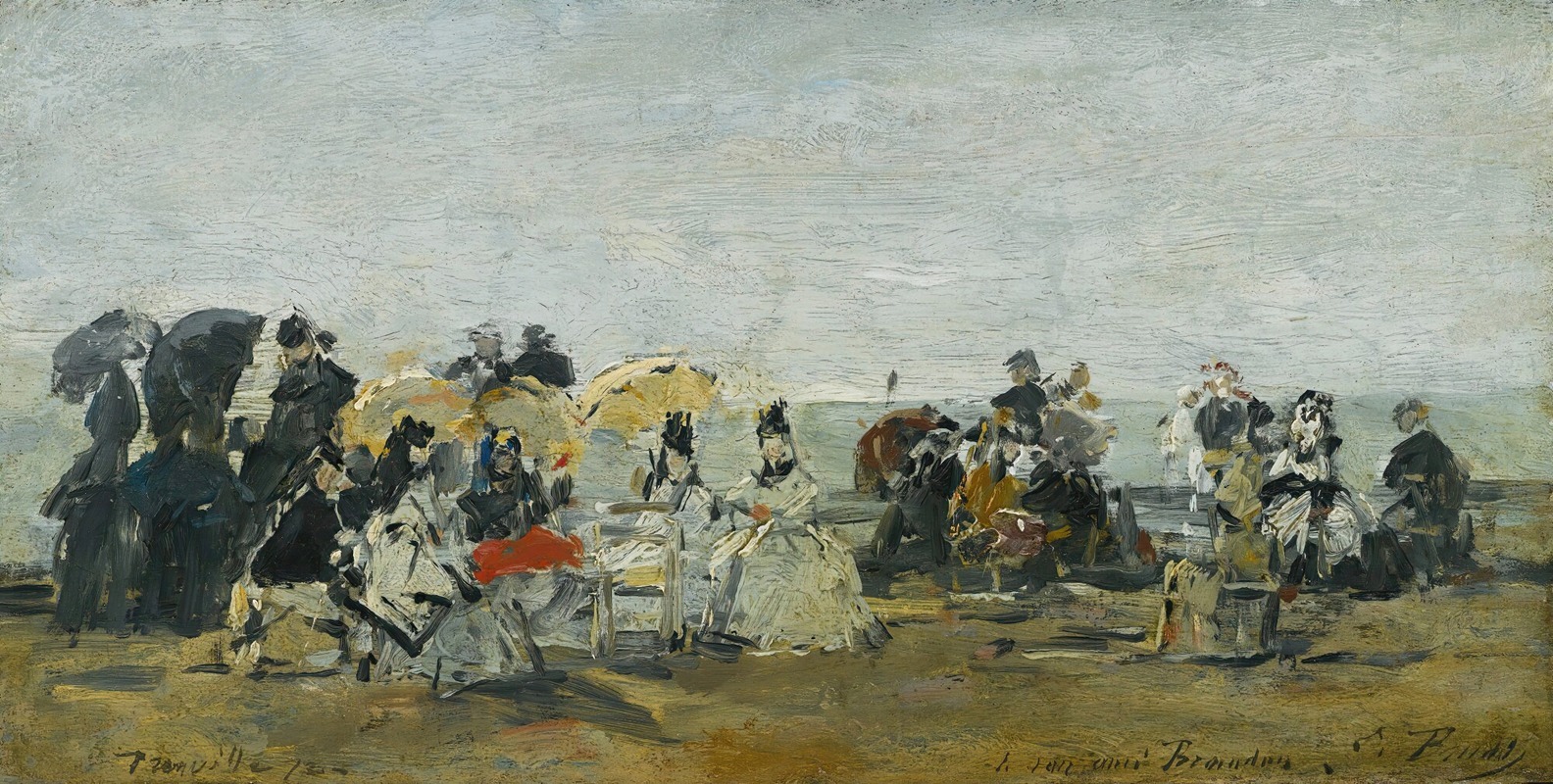
Scène De Plage À Trouville
A hand-painted replica of Eugène Boudin’s masterpiece Scène De Plage À Trouville, meticulously crafted by professional artists to capture the true essence of the original. Each piece is created with museum-quality canvas and rare mineral pigments, carefully painted by experienced artists with delicate brushstrokes and rich, layered colors to perfectly recreate the texture of the original artwork. Unlike machine-printed reproductions, this hand-painted version brings the painting to life, infused with the artist’s emotions and skill in every stroke. Whether for personal collection or home decoration, it instantly elevates the artistic atmosphere of any space.
Eugène Boudin, a pioneering French painter, is renowned for his beach scenes and his role in the development of Impressionism. One of his notable works, "Scène De Plage À Trouville," exemplifies his skill in capturing the transient effects of light and atmosphere, which became a hallmark of the Impressionist movement.
"Scène De Plage À Trouville" is a painting that depicts a lively beach scene at Trouville, a coastal town in Normandy, France. Boudin had a profound connection with this region, as it was a popular destination for Parisians seeking leisure by the sea during the 19th century. The painting reflects Boudin's fascination with the seaside and his ability to portray the leisurely activities of the bourgeoisie who frequented these beaches.
The composition of "Scène De Plage À Trouville" is characterized by its loose brushwork and the artist's keen observation of natural light. Boudin was particularly interested in the effects of weather and light on the landscape, and this painting captures the dynamic interplay of sunlight and shadow on the sand and water. The sky, often a central element in Boudin's works, is depicted with a sense of movement and change, suggesting the fleeting nature of the scene.
Boudin's technique involved painting en plein air, or outdoors, which allowed him to observe and record the changing conditions of the environment directly. This approach was innovative at the time and influenced many Impressionist painters, including Claude Monet, who regarded Boudin as a mentor. The spontaneity and immediacy of Boudin's brushwork in "Scène De Plage À Trouville" convey a sense of realism and vitality, capturing the essence of a moment in time.
The figures in the painting are depicted engaging in various activities typical of a day at the beach. Women in elegant dresses, children playing, and men in suits are portrayed with a sense of movement and interaction. Boudin's attention to detail in the clothing and postures of the figures adds to the authenticity of the scene, providing a glimpse into the social customs of the era.
"Scène De Plage À Trouville" is not only a representation of a specific location but also a reflection of the broader cultural and social context of 19th-century France. The painting illustrates the rise of leisure culture and the changing attitudes towards outdoor recreation during this period. Boudin's work captures the spirit of the time, offering insight into the lives of those who enjoyed the newfound accessibility of coastal resorts.
Today, Eugène Boudin is celebrated as a precursor to Impressionism, and his beach scenes, including "Scène De Plage À Trouville," continue to be appreciated for their innovative approach to capturing light and atmosphere. His influence on subsequent generations of artists underscores the significance of his contributions to the development of modern art.





